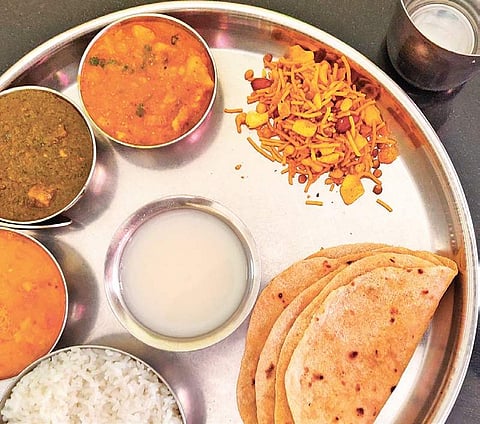

Rising inflation may have burnt a hole in the common man's pocket but the Economic Survey which was presented on Friday proves otherwise, as the Chief Economic Advisor (CEA) Krishnamurthy Subramanian explained in a novel chapter named 'Thalinomics.'
In the chapter, the survey compares the price of standard vegetarian and non-vegetarian thalis across the country and concludes that the affordability of vegetarian 'thalis' has improved.
Using the annual earnings of an average industrial worker, the survey found that affordability of vegetarian thalis improved 29 per cent from 2006-07 to 2019-20 while that of non-vegetarian thalis improved by 18 per cent.
This conclusion was arrived at after analysing the price data from the Consumer Price Index for industrial workers from April 2006 to October 2019.
According to the survey, a vegetarian thali comprises a serving of cereals, sabzi and dal while a non-vegetarian thali comprises cereals, sabzi and a non-vegetarian component.
It is mentioned that the thali prices were determined by taking into account the prices for cereals, sabzi, dal as well as the cost of fuel that goes into making a meal.
As a result, an average household of five individuals that eats two vegetarian thalis a day gained around Rs 10,887 on average per year, while a non-vegetarian household gained Rs 11,787 on average per year.
Conclusion:
When comparing between 2006-07 and 2019-20 (April-October), vegetarian thalis have become more affordable in all states under consideration.
In the case of non-vegetarian thalis, affordability has increased during this period in all states except Bihar and Maharashtra, where it has shown a marginal decline.
In 2019-20 (April-October), the most affordable thali was in Jharkhand as two vegetarian thalis for a household of five in the state required about 25 per cent of a worker's daily wage. Non-vegetarian thalis were also the most affordable there.
With regard to vegetarian thalis, the survey found that an individual who would have spent around 70 per cent of his/her daily wage on two thalis for a household of five in 2006-07 is able to afford the same number of thalis from around 50 per cent of his daily wage in 2019-20 (April to October).
Similarly, the affordability of non-vegetarian thalis has also increased with the percentage of wages required decreasing from around 93 per cent to around 79 per cent between 2006-07 and 2019-20 (April to October).